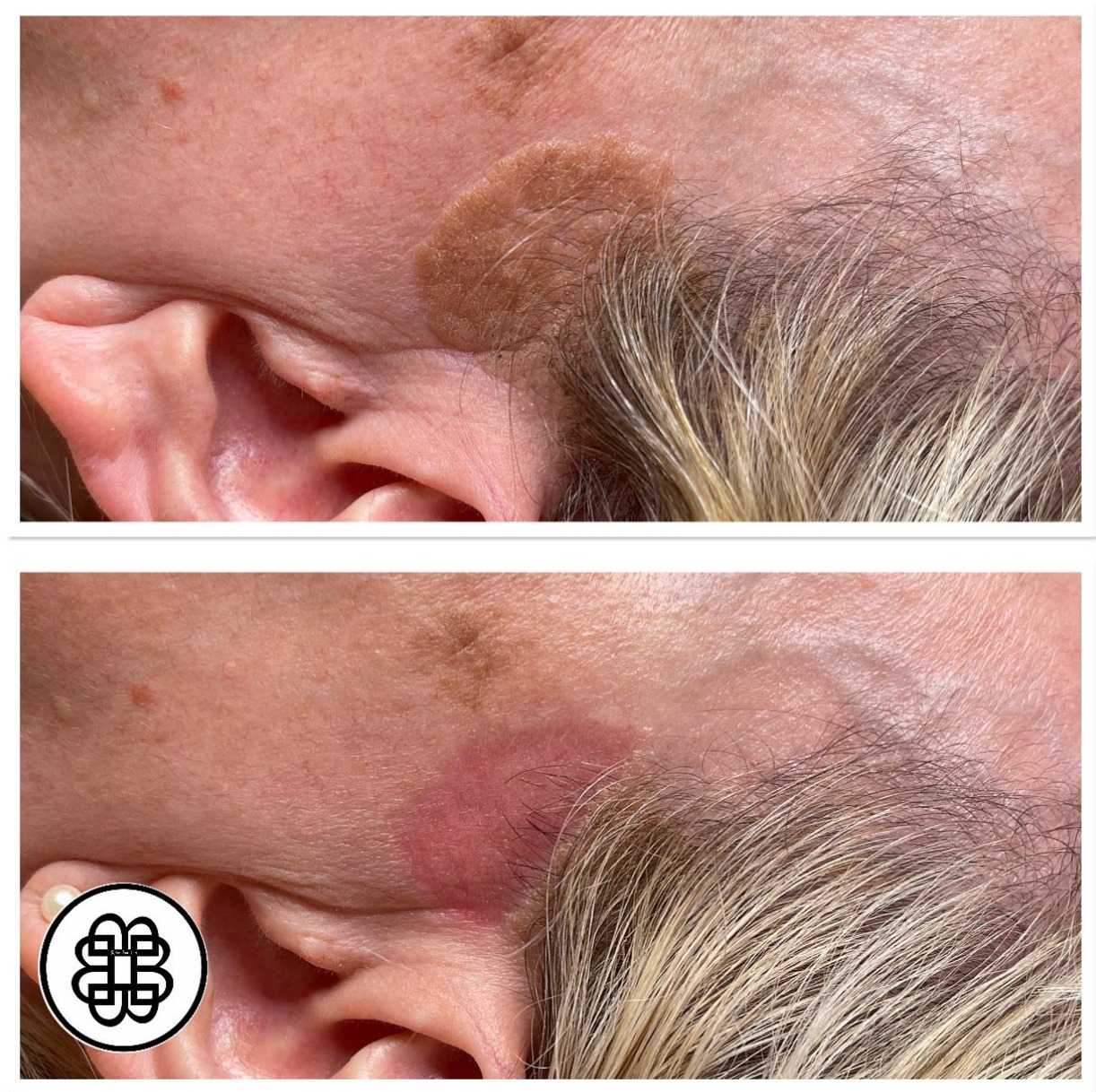Service
Mole & Skin tag Removal
Are you troubled by:
What is Seborrhoeic Keratosis?
Seborrhoeic keratosis is a common, benign skin growth that typically appears as a raised, wart-like lesion with a rough, scaly surface.
These growths can vary in color from light tan to black and often have a waxy or “stuck-on” appearance. Seborrhoeic keratoses are most commonly found on the face, chest, back, and scalp, and they tend to increase in number with age. While they are not cancerous and generally do not require treatment, they can sometimes be mistaken for more serious skin conditions, including skin cancer. If they become itchy, irritated, or change in appearance, it is advisable to initially have a dermatology consultation with Rachel for evaluation. Removal options, such as cryotherapy laser and cauterisation are available for those who wish to eliminate them for cosmetic reasons.


What is Xanthelasma?
Xanthelasma, characterised by yellowish plaques that typically appear around the eyelids, is not only an aesthetic concern but also an important health indicator. Treating xanthelasma is essential because it can be associated with underlying conditions such as high cholesterol levels or lipid disorders, which may increase the risk of cardiovascular diseases. By addressing xanthelasma, individuals can raise awareness about their overall health and potentially prompt further evaluation of lipid profiles and heart health. Moreover, the presence of xanthelasma can lead to psychological distress due to its visibility, impacting self-esteem and quality of life. Treatment options we offer include cauterisation or cryotherapy. This can effectively remove these lesions, improving both appearance and encouraging proactive health management.
Is it Safe?
Mole and skin tag removal is a common dermatological procedure often performed to eliminate moles that are bothersome or have changed in appearance, potentially indicating health concerns. Two effective methods for mole removal are cryotherapy and cauterisation. Cryotherapy involves freezing the mole with liquid nitrogen, causing the tissue to die and eventually fall off as the skin heals. This technique is quick, minimally invasive, and typically requires little downtime. On the other hand, cauterisation utilises heat to burn away the mole, effectively sealing the wound to minimise bleeding and promote healing. Both methods can be performed here at The Four B’s with the choice of technique depending on the mole’s size, location, and the patient’s medical history. Aftercare is crucial to ensure proper healing and to monitor for any signs of complications or recurrence.
Prices start from £150



★★★★★
“I had the PDO thread lift done for my sagging cheeks and jawline, and I couldn’t be happier with the results. It’s incredible how much firmer and lifted my face looks, all without the need for surgery!”
★★★★★
“After noticing deep lines around my mouth and sagging skin, I opted for a PDO thread lift. The procedure was quick, and the recovery was minimal. My face looks more youthful, and I feel great!”
★★★★★
“I was hesitant about non-surgical treatments, but after trying the PDO thread lift, I’m sold. The results were noticeable immediately and have continued to improve. Highly recommend!”
★★★★★
“I’ve always been self-conscious about my drooping brow, and the PDO thread lift completely transformed my appearance. It’s an amazing treatment, and I’m thrilled with the results!”
Testimonials
